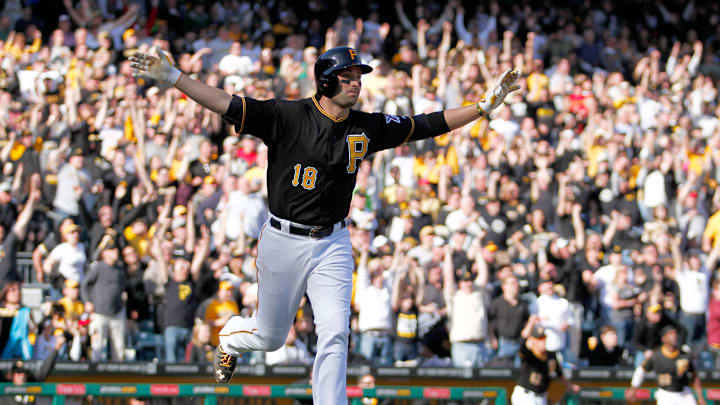Neil Walker - Catcher to Third Base to Second Base
Neil Walker actually made two position changes before ending up at second base. In 2004, the Pittsburgh Pirates drafted Walker as a backstop, and this is where he spent the first three years of his minor league career before moving to third base full-time in 2006.
Walker had defensive issues behind the dish, and the move out from behind the plate was debated on before. But by 2009, the Pirates moved Walker again, this time to accommodate for Pedro Alvarez, who was their 2008 first-round selection and one of the best prospects in the minors at the time.
Walker ended up being the best offensive Pirate second baseman in the franchise's history. In 3426 plate appearances, Walker slashed .272/.338/.431 with a .336 wOBA and 114 wRC+. Among Pirate second basemen with at least 800 plate appearances, Walker has the highest wRC+, wOBA, OPS, slugging percentage, and second-highest home run total at 98.
But Walker wasn't much of a defender at second base. He had -22 Defensive Runs Saved and a -5.8 UZR/150 across 6890 innings at the middle infield position. He averaged about -3 DRS a season, but he made do and was good enough as he made up for with his bat.
Later on in Walker's career he would make yet another position change, this time moving back to third base and seeing time at first base. In 2018 and 2019, Walker played more first base than second or third. He even played a handful of games in left field for the Yankees in 2018. But he never made an appearance as a catcher, not even in emergency duty (though you'd have to imagine that he was the last-resort emergency backstop option in the event of multiple injuries for the Pittsburgh Pirates and the other teams he played for).
